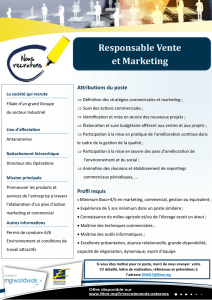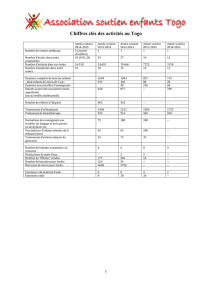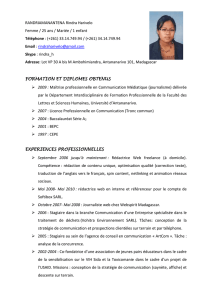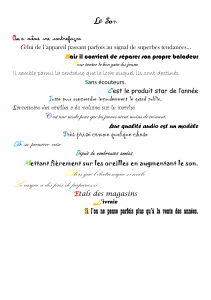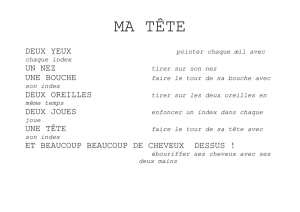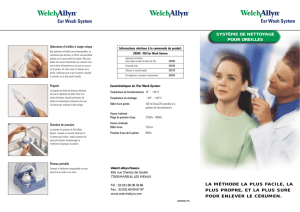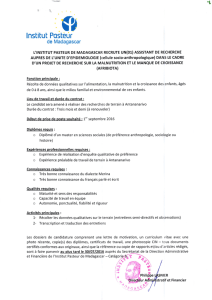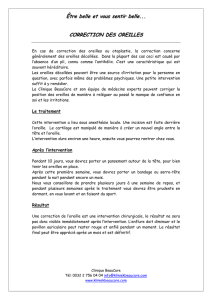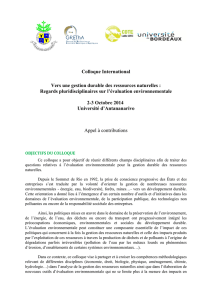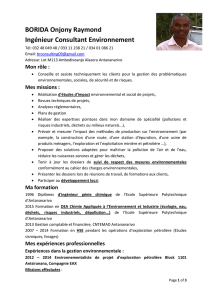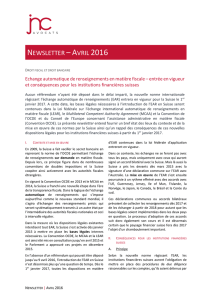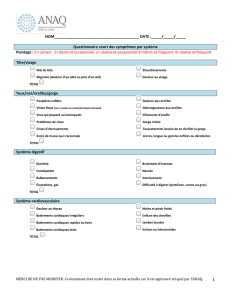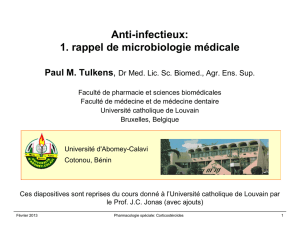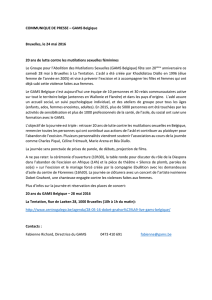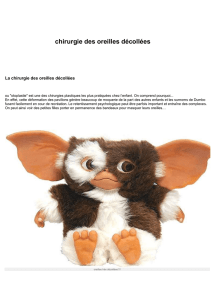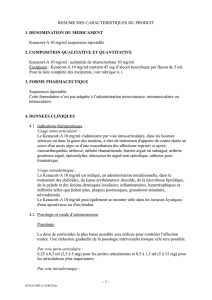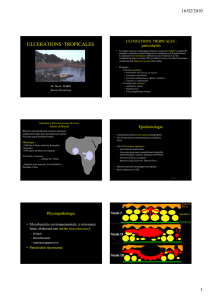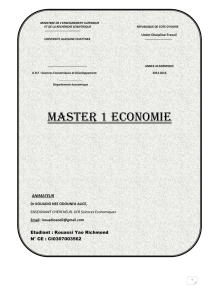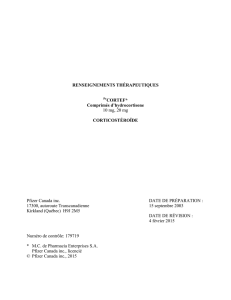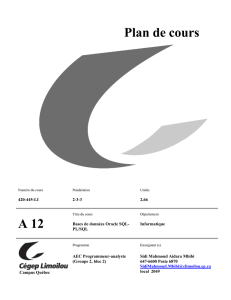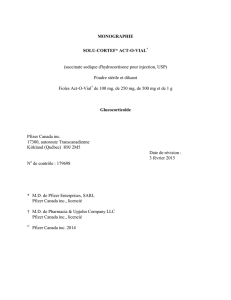Prise en charge des Chéloïdes d`oreilles au Centre
publicité
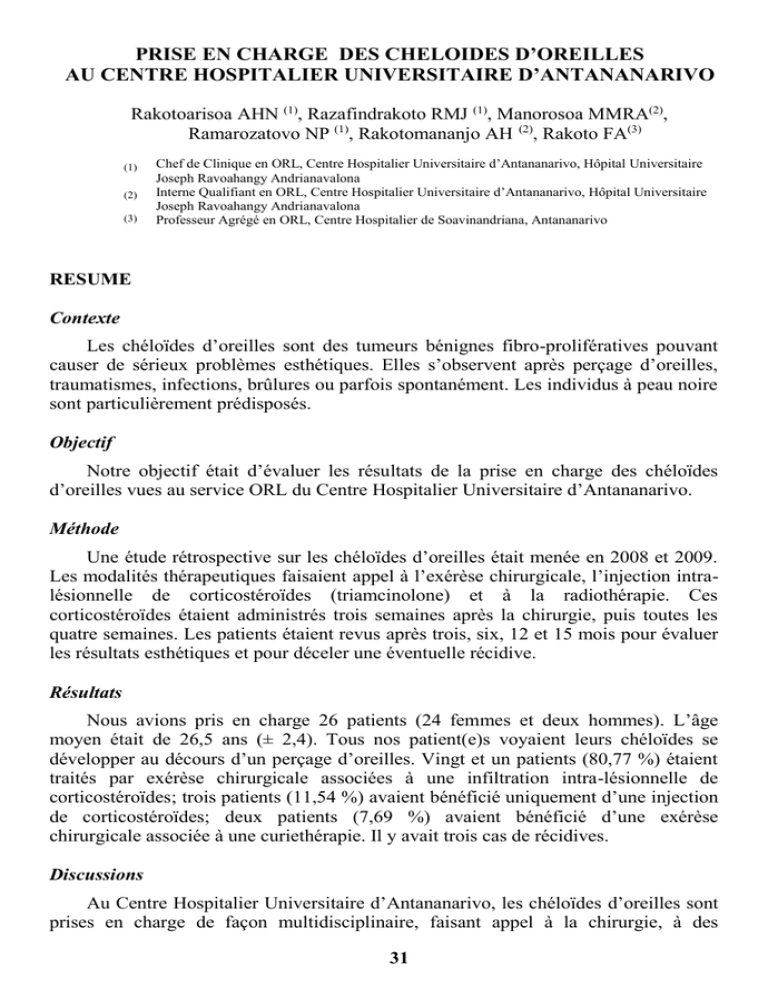
PRISE EN CHARGE DES CHELOIDES D’OREILLES AU CENTRE HOSPITALIER UNIVERSITAIRE D’ANTANANARIVO Rakotoarisoa AHN (1), Razafindrakoto RMJ (1), Manorosoa MMRA(2), Ramarozatovo NP (1), Rakotomananjo AH (2), Rakoto FA(3) (1) (2) (3) Chef de Clinique en ORL, Centre Hospitalier Universitaire d’Antananarivo, Hôpital Universitaire Joseph Ravoahangy Andrianavalona Interne Qualifiant en ORL, Centre Hospitalier Universitaire d’Antananarivo, Hôpital Universitaire Joseph Ravoahangy Andrianavalona Professeur Agrégé en ORL, Centre Hospitalier de Soavinandriana, Antananarivo RESUME Contexte Les chéloïdes d’oreilles sont des tumeurs bénignes fibro-prolifératives pouvant causer de sérieux problèmes esthétiques. Elles s’observent après perçage d’oreilles, traumatismes, infections, brûlures ou parfois spontanément. Les individus à peau noire sont particulièrement prédisposés. Objectif Notre objectif était d’évaluer les résultats de la prise en charge des chéloïdes d’oreilles vues au service ORL du Centre Hospitalier Universitaire d’Antananarivo. Méthode Une étude rétrospective sur les chéloïdes d’oreilles était menée en 2008 et 2009. Les modalités thérapeutiques faisaient appel à l’exérèse chirurgicale, l’injection intralésionnelle de corticostéroïdes (triamcinolone) et à la radiothérapie. Ces corticostéroïdes étaient administrés trois semaines après la chirurgie, puis toutes les quatre semaines. Les patients étaient revus après trois, six, 12 et 15 mois pour évaluer les résultats esthétiques et pour déceler une éventuelle récidive. Résultats Nous avions pris en charge 26 patients (24 femmes et deux hommes). L’âge moyen était de 26,5 ans (± 2,4). Tous nos patient(e)s voyaient leurs chéloïdes se développer au décours d’un perçage d’oreilles. Vingt et un patients (80,77 %) étaient traités par exérèse chirurgicale associées à une infiltration intra-lésionnelle de corticostéroïdes; trois patients (11,54 %) avaient bénéficié uniquement d’une injection de corticostéroïdes; deux patients (7,69 %) avaient bénéficié d’une exérèse chirurgicale associée à une curiethérapie. Il y avait trois cas de récidives. Discussions Au Centre Hospitalier Universitaire d’Antananarivo, les chéloïdes d’oreilles sont prises en charge de façon multidisciplinaire, faisant appel à la chirurgie, à des 31 injections intra-lésionnelles de corticostéroïdes et parfois à la radiothérapie. En général, les suites esthétiques sont satisfaisantes. Mots-clés : Chéloïde, corticostéroïde, exérèse, lobule d’oreille, radiothérapie. 32 MANAGEMENT OF EAR KELOIDS IN ANTANANARIVO UNIVERSITY HOSPITAL CENTRE ABSTRACT Background Ear keloids are benign fibro-proliferative tumours. They often cause serious aesthetic problems. They can occur after ear lobe piercing, traumatisms, infection, burns or spontaneously. Individuals with pigmented skin are predisposed. Objective The purpose of this study was to evaluate the therapeutic results of ear keloids management. Method The authors performed a retrospective study of patients with ear keloids treated in 2008 and 2009. Treatment modalities included surgical excision, intralesional injections of corticosteroids (triamcinolone) and radiotherapy. Corticosteroids were administrated three weeks after surgery and every four weeks afterwards. Patients were assessed three, six, 12 and 15 months after the procedure to evaluate the aesthetic results and post-operative recurrences. Results Twenty six patients (24 women and two men) presenting with ear keloids were included in this series. Their mean age was 26.5 years (± 2.4). All patients developed keloids from ear-piercing. A total of 21 patients (80.77 %) have been treated with surgical excision plus corticosteroid injections, three patients (11.54 %) had only intralesional corticosteroid injections, two patients (7.69 %) had surgical excision plus radiotherapy. Only three cases of recurrences occurred. Discussions Management of ear keloids in the University Hospital Centre of Antananarivo include interdisciplinary approach involving sometimes a combination of surgery, intralesional corticosteroid injections and radiotherapy. In general, the aesthetic outcomes were satisfactory. Key-words : Corticosteroid, ear lobe, excision, keloid, radiotherapy. 33
